The Party's National Conference, held from August 13 to 15, 1945 in Tan Trao, focused the intelligence of the entire Party to deeply analyze the world and domestic situation, decided to seize the opportunity to lead the entire people in a general uprising to seize power and elected the National Uprising Committee to direct that important work... (Excerpt from the speech of General Secretary Do Muoi at the Rally to celebrate the 50th anniversary of the August Revolution and National Day September 2 in Tan Trao, August 16, 1995).
In 1945, the world and domestic situation changed very quickly, favorable to the Vietnamese revolution. On the night of March 9, 1945, Japan launched a coup against France throughout Indochina. France fought back weakly and quickly surrendered. On March 12, 1945, the Central Committee of the Indochinese Communist Party issued the Directive on Japanese and French fighting and our actions. Immediately after the Directive was issued, the anti-Japanese, national salvation movement rose strongly, and partial uprisings broke out in many localities.
In Tuyen Quang , on the night of March 10, 1945, the Thanh La uprising broke out under the direct leadership of comrade Ta Xuan Thu and the Nguyen Hue Sub-region Command. The revolutionary armed forces quickly disarmed the militia, forced the village chiefs and militiamen to submit, hand over their guns, royal decrees, and bronze seals. We completely liberated Thanh La commune that night, then expanded the uprising to neighboring communes and advanced to liberate Dang Chau - Son Duong district.
On March 16, 1945, in Thanh La (now Minh Thanh commune, Son Duong district, Tuyen Quang province), a rally took place, announcing the establishment of Tu Do district and the district's provisional revolutionary committee. The Thanh La uprising was victorious, and the establishment of Tu Do district was one of the first commune- and district-level revolutionary governments established in the country.
Faced with the rapid developments of the world and domestic situation in a direction favorable to the Vietnamese revolution, in late April and early May 1945, in order to facilitate the direction of the nationwide revolutionary movement, prepare forces, and seize the opportunity to carry out a General Uprising to seize power throughout the country, leader Ho Chi Minh instructed comrade Vo Nguyen Giap: It is necessary to immediately choose in the Cao-Bac-Lang or Tuyen Quang, Thai Nguyen region a location with good people, good revolutionary bases, good terrain, which can conveniently serve as a communication center with the lowlands, the highlands, abroad and preserve our forces. "Advance can be attacked, retreat can be defended" we are still weak, the enemy is strong, but we must not let the enemy destroy us.
Following the directive of leader Ho Chi Minh, comrade Vo Nguyen Giap went to Kim Quan Thuong (in Tan Trao area) with the leadership of Division B-Nguyen Hue including comrades: Song Hao, Ta Xuan Thu, Le Duc Ton, Le Trung Dinh... after surveying the area along the Pho Day river from Kim Quan to Tan Trao commune and discussing, they agreed to choose Tan Trao area as the central leadership base of the Central Committee and leader Ho Chi Minh.
In Tan Trao, leader Ho Chi Minh and the Party Central Committee directed the urgent preparation of forces for the General Uprising. In early June 1945, he directed the establishment of the Liberation Zone including 6 provinces: Cao Bang, Bac Kan, Lang Son, Ha Giang, Tuyen Quang, Thai Nguyen and some neighboring areas of Bac Giang, Vinh Yen, Phu Tho, Yen Bai provinces, choosing Tan Trao as the capital of the Liberation Zone.
In the early days of his arrival in Tan Trao, Uncle Ho stayed with Mr. Nguyen Tien Su's family in Tan Lap village, which was then called Kim Long village. Later, to ensure secrecy and convenience for work, Uncle Ho moved to Na Nua hut in Tan Trao commune, Son Duong district and worked from the end of May to August 22, 1945 to prepare and lead the August 1945 General Uprising.
On August 13, 1945, the Party Central Committee decided to establish the National Uprising Committee headed by General Secretary Truong Chinh. On the night of August 13, 1945, the National Uprising Committee issued Military Order No. 1, ordering a general uprising to seize power throughout the country. In the Na Nua forest, from August 14-15, 1945, the Party's National Conference took place, making the decision to seize the opportunity for a general uprising throughout the country.
Also in Tan Trao, on August 16 and 17, 1945, the National Congress met to approve and support the Party's General Uprising policy; approved 10 major policies of the Viet Minh Front, elected the Vietnam National Liberation Committee with leader Ho Chi Minh as Chairman; and stipulated the National Flag and National Anthem.
On the afternoon of August 16, at the Tan Trao banyan tree, comrade Vo Nguyen Giap, on behalf of the Revolutionary Military Committee, read Military Order No. 1, marching to liberate Thai Nguyen town and moving towards liberating Hanoi and other provinces and cities across the country. From here, the nationwide uprising was launched, spreading throughout the three regions.
Under the brilliant and wise leadership of the Party and President Ho Chi Minh, millions of Vietnamese people rose up as one, and successfully seized power. The great victory of the August Revolution in 1945 opened a new era in the history of the nation: the era of independence, freedom and socialism; opened a new era: the Ho Chi Minh era, the most brilliant and glorious in the history of the nation.
The Party Committee and people of all ethnic groups in Tuyen Quang province are very honored and proud to witness and contribute to the historic victories of the Vietnamese revolution.
These days in May, at the Tan Trao National Special Relic Site, the number of visitors to the source has increased sharply. Long lines of domestic and international visitors line up to report their achievements to Uncle Ho and visit the Na Nua hut and Tan Trao communal house - where the National Congress met from August 16 to 17, 1945. The bustling groups of visitors coming and going create an emotional impression of the affection of the people in the country for the land of the origin of the revolution.
Ms. Nguyen Thi Nga, a tourist from Quang Ninh, said: This is the second time she has visited Na Nua hut. Stopping at each historical site, everyone feels the shadow of Uncle Ho. Tan Trao now feels both strange and familiar because it has changed a lot, people's lives have improved, houses are spacious and clean, and transportation is convenient.
General Secretary and National Assembly Chairman Nguyen Phu Trong, when visiting and wishing a Happy New Year to the Party Committee, government and people of all ethnic groups in Tuyen Quang province on January 28, 2011, wrote:... For a long time, Tan Trao, Son Duong, Kim Binh, Chiem Hoa... have become sacred and familiar historical sites closely associated with the heroic revolutionary struggle of our Party, our people and our beloved President Ho Chi Minh. Tuyen Quang - the Capital of the Liberated Zone, the Capital of Resistance will forever be the pride of the people of all ethnic groups in Tuyen Quang province and the people of the whole country. Our Party, State and people highly appreciate and are grateful for the great contributions and sacrifices of the Party Committee, government and people of Tuyen Quang...
Implementing Directive No. 05-CT/TW of the Politburo on "Promoting the study and following of Ho Chi Minh's ideology, morality and lifestyle", on May 23, 2021, the Standing Committee of Tuyen Quang Provincial Party Committee issued Project No. 02-DA/TU on continuing to innovate the content and methods of operation of the Fatherland Front and socio-political organizations closely linked with emulation movements and specific campaigns at localities, agencies and units and has received positive responses from the entire political system.
After nearly four years of implementation, by 2025, 10,429 poor, near-poor, and disadvantaged households will have their houses repaired or built new ones; visit and give gifts to poor households, disadvantaged households, families affected by rain and floods, and policy families, worth more than 11.6 billion VND... Thereby, contributing to strengthening the close and intimate relationship between cadres, party members and the people; creating consensus and trust between the people and the Party Committee and the government.
The 80th anniversary of Uncle Ho's return to Tuyen Quang to lead the August Revolution is an opportunity to arouse pride, sense of responsibility, continue tradition and foster aspirations for development.
Comrade Ha Thi Nga, Secretary of the Provincial Party Committee, Head of the National Assembly Delegation of Tuyen Quang province affirmed that the Tan Trao tradition is the luggage and motivation for the Party Committee and people of Tuyen Quang today to constantly strive to build Tuyen Quang worthy of the trust that history has given. Realizing the goal of "rich people, strong country, democracy, equality, civilization" so that "... everyone has food to eat, clothes to wear, and education", as Uncle Ho once instructed.
Source: https://nhandan.vn/noi-khoi-nguon-thang-loi-cua-cach-mang-thang-tam-post880506.html


![[Photo] National conference to disseminate and implement Resolution No. 66-NQ/TW and Resolution No. 68-NQ/TW of the Politburo](https://vphoto.vietnam.vn/thumb/1200x675/vietnam/resource/IMAGE/2025/5/18/adf666b9303a4213998b395b05234b6a)
![[Photo] More than 17,000 candidates participate in the 2025 SPT Competency Assessment Test of Hanoi National University of Education](https://vphoto.vietnam.vn/thumb/1200x675/vietnam/resource/IMAGE/2025/5/17/e538d9a1636c407cbb211b314e6303fd)

![[Photo] Prime Minister Pham Minh Chinh chairs meeting on science and technology development](https://vphoto.vietnam.vn/thumb/1200x675/vietnam/resource/IMAGE/2025/5/17/ae80dd74c384439789b12013c738a045)


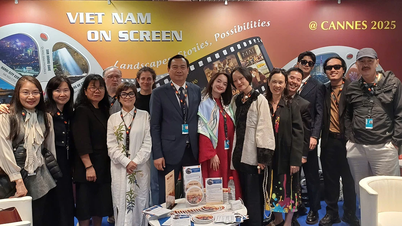
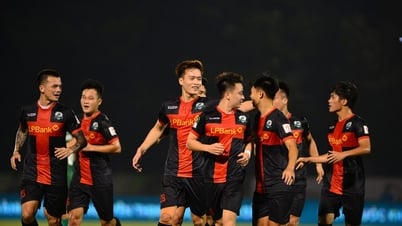

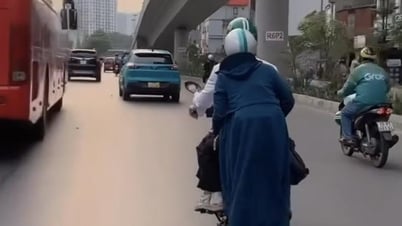
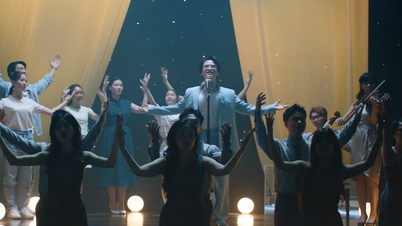

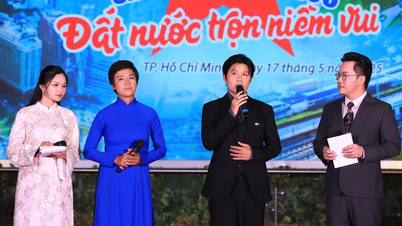
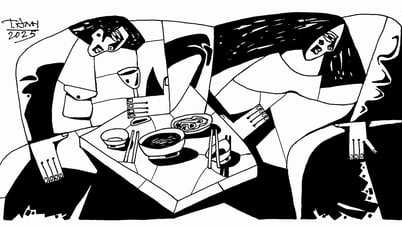








![[Photo] National conference to disseminate and implement Resolution No. 66-NQ/TW and Resolution No. 68-NQ/TW of the Politburo](https://vphoto.vietnam.vn/thumb/402x226/vietnam/resource/IMAGE/2025/5/18/adf666b9303a4213998b395b05234b6a)

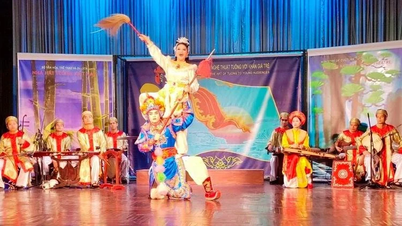
![[Photo] Readers line up to visit the photo exhibition and receive a special publication commemorating the 135th birthday of President Ho Chi Minh at Nhan Dan Newspaper](https://vphoto.vietnam.vn/thumb/1200x675/vietnam/resource/IMAGE/2025/5/17/85b3197fc6bd43e6a9ee4db15101005b)






















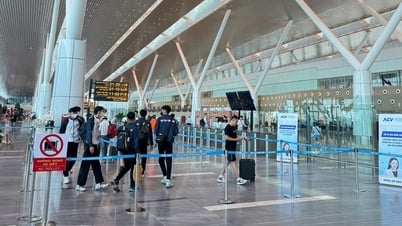


















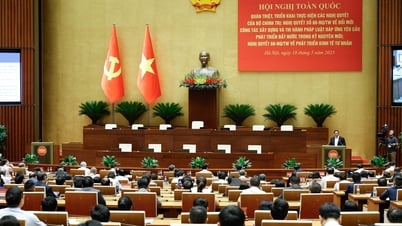


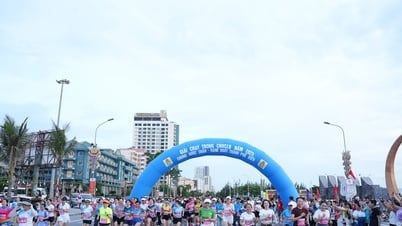



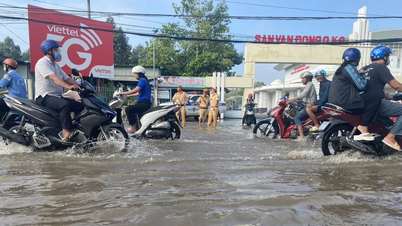
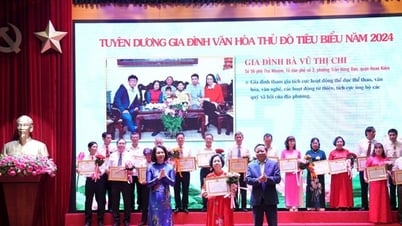









Comment (0)